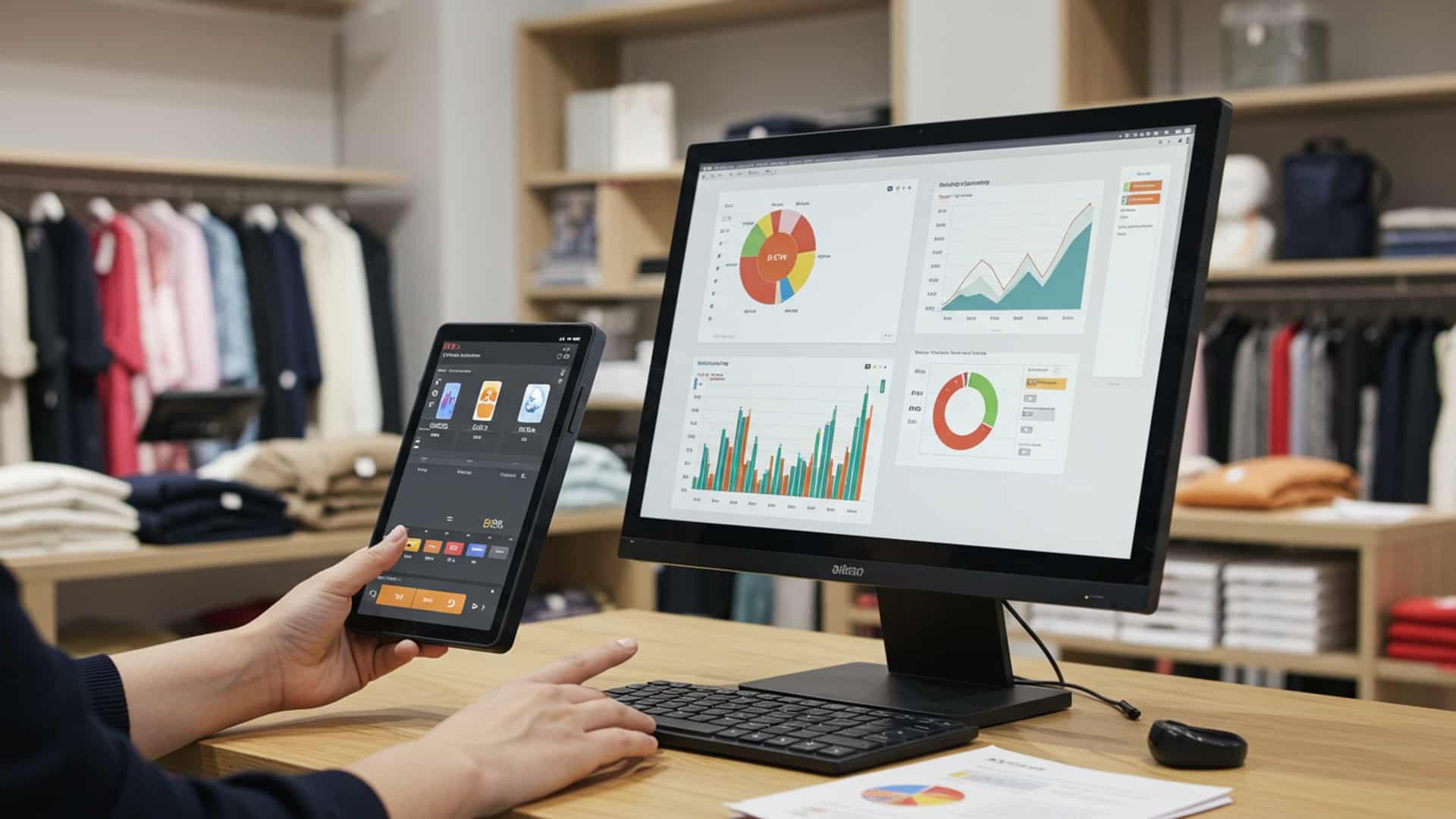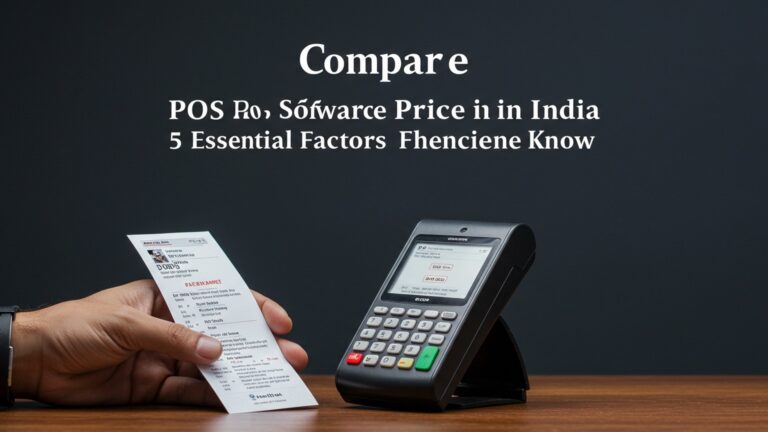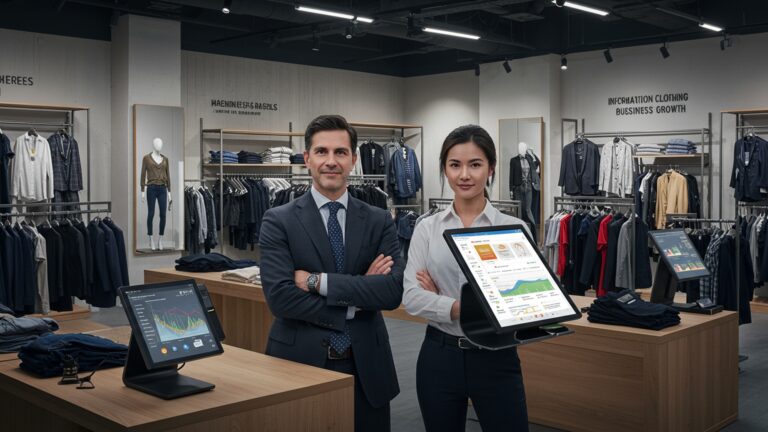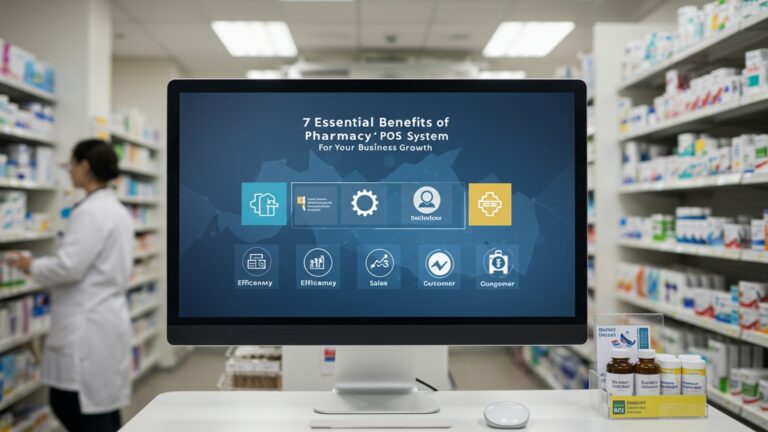Mastering Textile Retail 8 Must-Have POS Software Features
The dynamic textile retail landscape, where rapid fashion cycles and consumer demand for personalized experiences constantly reshape expectations, necessitates more than basic transaction processing. Modern retailers, from boutique apparel to large fabric stores, often find generic point-of-sale systems inadequate for managing intricate inventory variations, such as a single garment style across multiple sizes, colors. material blends, or tracking sustainable fabric origins. A specialized textile POS system is now a strategic imperative, empowering businesses to streamline operations and enhance customer satisfaction. Identifying the essential textile pos system features that truly elevate efficiency and drive engagement is crucial for thriving in today’s fiercely competitive market.

Advanced Inventory Management with Variant Tracking
For any textile retailer, managing inventory is far more complex than simply counting items. You’re dealing with a myriad of variants: different sizes, colors, materials, patterns. even specific cuts for a single garment or fabric type. A top-tier POS system for textile retail doesn’t just track quantity; it meticulously categorizes each variant, ensuring accuracy from the moment stock arrives to when it leaves your shelves.
Advanced Inventory Management with Variant Tracking refers to the ability of a POS system to not only track the quantity of each product but also to differentiate and manage stock levels for every variation of that product (e. g. , a “Blue Large Silk Scarf” versus a “Red Small Cotton Scarf”). This system often uses unique Stock Keeping Units (SKUs) for each variant.
Imagine a customer walks into your boutique looking for a specific dress. With a robust inventory system, your sales associate can quickly check if the desired size and color are in stock, either on the shop floor, in the back room, or even at another store location, all from the POS terminal. This prevents lost sales due to inaccurate stock counts or the inability to locate a specific item. For fabric stores, it means tracking bolt numbers, yardage. specific dye lots, which is crucial for customers needing matching material for a project.
- Actionable Takeaway
Prioritize a system that allows for multi-dimensional variant tracking (e. g. , size X color X material). This will drastically reduce manual errors and improve customer satisfaction by providing real-time stock visibility. When evaluating textile POS system features, ensure it handles complex SKUs with ease.
Integrated Customer Relationship Management (CRM) & Loyalty Programs
In the competitive world of textile retail, understanding and retaining your customers is paramount. A powerful POS system integrates CRM capabilities that go beyond basic transaction history, allowing you to build lasting relationships and foster loyalty. This is one of the most impactful textile POS system features for long-term growth.
Integrated CRM (Customer Relationship Management) within a POS system enables retailers to capture, store. assess customer data directly at the point of sale. This includes purchase history, contact details, preferences. interactions. Loyalty programs, often built into the CRM, reward repeat customers through points, discounts, or exclusive offers.
| Basic POS Customer Tracking | Integrated CRM & Loyalty |
|---|---|
| Records customer name and transaction. | Comprehensive profile: purchase history, preferences, contact info, notes. |
| Limited ability to personalize offers. | Segment customers for targeted marketing campaigns (e. g. , new arrivals based on past purchases). |
| No automated loyalty rewards. | Automated points accumulation, tiered rewards, birthday discounts. |
| Hard to track customer lifetime value. | Provides insights into customer lifetime value (CLV) and churn risk. |
Consider a customer who frequently buys sustainable fashion. With an integrated CRM, your system can automatically notify them about new eco-friendly collections or offer a special discount on their birthday. A leading fashion retailer, for instance, uses their POS-integrated CRM to identify top spenders and invite them to exclusive pre-launch events, significantly boosting engagement and sales. This personalized approach transforms a transactional interaction into a relationship.
- Actionable Takeaway
Leverage your CRM to create personalized shopping experiences. Train staff to use customer data (e. g. , “I see you often prefer linen fabrics”) to make relevant recommendations, enhancing both sales and customer satisfaction.
Omnichannel Sales & Sync Capabilities
Modern textile retail is no longer confined to brick-and-mortar stores. Customers expect a seamless experience whether they’re browsing online, shopping in-store, or using a “click-and-collect” service. Omnichannel capabilities are among the most crucial textile POS system features for today’s market.
Omnichannel Sales & Sync Capabilities refer to a POS system’s ability to unify all sales channels (physical store, e-commerce website, mobile app, social media sales) into a single, cohesive platform. This ensures real-time inventory synchronization, consistent pricing. a unified customer experience across all touchpoints.
Sarah sees a dress on your Instagram, checks its availability on your website (which reflects real-time in-store stock), reserves it online. picks it up at your physical store an hour later. If the dress doesn’t fit, she can return it in-store. her online purchase history is immediately accessible to the associate. Without omnichannel sync, this seamless journey would be a logistical nightmare, leading to frustrated customers and manual errors.
- Actionable Takeaway
Invest in a POS system that offers robust integration with your e-commerce platform (e. g. , Shopify, Magento). Ensure it provides real-time inventory updates across all channels to prevent overselling or missed sales opportunities. This unified approach is a cornerstone of effective textile POS system features.
Streamlined Returns, Exchanges, & Store Credit Processing
Returns and exchanges are an inevitable part of textile retail, especially in fashion, where fit and personal preference play a huge role. An efficient, customer-friendly return process can turn a potentially negative experience into an opportunity to build trust and loyalty. This is a non-negotiable among essential textile POS system features.
This feature enables quick and accurate processing of product returns, exchanges for different sizes/colors. the issuance of store credit or refunds. It integrates with inventory management to instantly update stock levels and with CRM to track return history, flagging potential abuse while ensuring legitimate returns are handled smoothly.
A customer returns a blouse purchased last week. With a streamlined system, the sales associate scans the receipt (or finds the transaction via customer name/card), processes the return. the returned item is immediately added back to available inventory (if resalable). If the customer opts for an exchange, the system automatically adjusts inventory for both the returned and new item. If they prefer store credit, a digital gift card is issued instantly, which can be tracked and used online or in-store. This speed and accuracy are critical for busy periods like post-holiday sales.
- Actionable Takeaway
Look for a system that automates much of the return process, reducing manual data entry and potential errors. Features like digital receipts and easy lookup of past transactions are invaluable for speeding up this common task.
Comprehensive Sales Analytics & Reporting
Data is the new fabric of smart retail. To truly master textile retail, you need to comprehend what’s selling, when it’s selling. to whom. Comprehensive sales analytics and reporting are vital textile POS system features that empower data-driven decision-making.
This feature provides detailed insights into sales performance through customizable reports and dashboards. It tracks key metrics like sales by product, category, variant, employee, time of day, customer segment. profit margins. Advanced systems can also identify trends, forecast demand. highlight slow-moving inventory.
A boutique owner notices through their POS reports that their sustainable denim line consistently sells out on weekends, while a specific brand of silk scarves underperforms during weekdays. They can then adjust staffing for weekends, optimize store displays. run a targeted weekday promotion on the scarves. Sarah, a store manager, used her POS data to discover that “plus-size” formal wear was a consistently high-margin category, leading her to expand that section, resulting in a 15% increase in overall store revenue for that quarter.
- Actionable Takeaway
Regularly review your sales reports to identify trends, optimize merchandising. inform purchasing decisions. Don’t just look at total sales; dig into product-level, variant-level. time-based data to uncover hidden opportunities.
Supplier & Purchase Order (PO) Management
Managing your supply chain efficiently is crucial for textile retail, especially when dealing with seasonal collections, limited editions. diverse vendors. A POS system with integrated supplier and purchase order management simplifies this complex process.
Supplier and Purchase Order (PO) Management features allow retailers to create, track. manage purchase orders directly within the POS system. This includes vendor details, ordered quantities, costs, delivery dates. receiving capabilities, ensuring an organized and transparent procurement process.
When a new collection arrives from your designer, instead of manually checking against an old spreadsheet, your POS system allows you to receive the goods by simply scanning them in. The system automatically updates inventory, matches the received items against the original PO. flags any discrepancies. This precision is vital for managing cash flow and ensuring you have the right stock at the right time. For a textile store dealing with multiple fabric suppliers, this feature helps track which supplier provides which material, their lead times. payment terms, streamlining reordering.
- Actionable Takeaway
Utilize this feature to maintain clear communication with suppliers, track order statuses. simplify the receiving process. This reduces errors, saves time. ensures your shelves are always stocked with desired merchandise.
Employee Management & Performance Tracking
Your sales team is often the first point of contact for customers and significantly influences their shopping experience. Effective employee management within your POS system can boost productivity, improve customer service. simplify administrative tasks. These are often overlooked but powerful textile POS system features.
This feature set allows retailers to manage employee profiles, assign roles and permissions, track clock-in/clock-out times. monitor individual sales performance. More advanced systems can also integrate with commission structures and provide insights into employee productivity and sales conversion rates.
Your POS system can track which employee made which sale, allowing you to easily calculate commissions or identify top performers. If a customer compliments a specific sales associate for their excellent service, you can easily verify their sales performance against their customer service feedback. Conversely, if a pattern of low sales or high returns is linked to a particular employee, it provides an opportunity for targeted training. A study by the National Retail Federation highlighted that empowered and well-managed staff directly correlate with higher sales and customer satisfaction.
- Actionable Takeaway
Use employee performance data to recognize and reward top performers, identify training needs. optimize staffing schedules for peak hours. Ensure your POS offers customizable permission settings to control access to sensitive details.
Promotions, Discounts, & Gift Card Management
Promotional activities are a cornerstone of textile retail, driving traffic, clearing old stock. rewarding loyal customers. A POS system that seamlessly handles various types of promotions, discounts. gift cards is indispensable.
This feature enables retailers to easily create, manage. apply a wide range of promotional offers (e. g. , “buy one get one free,” percentage discounts, bundle deals), issue and redeem gift cards (both physical and digital). manage store credits. It ensures accurate application of discounts at checkout and proper tracking of gift card balances.
It’s the end of the season. you want to clear out winter coats. You set up a “30% off all winter wear” promotion in your POS. When a customer brings a coat to the counter, the discount is automatically applied. Similarly, a customer receiving a digital gift card for their birthday can use it online or in-store. the balance is tracked across both channels. This avoids manual calculations, reduces errors. speeds up the checkout process, especially during high-volume sales events like Black Friday. These flexible textile POS system features are essential for dynamic pricing strategies.
- Actionable Takeaway
Explore the full range of promotional tools your POS offers. Experiment with different discount types and gift card strategies to attract new customers and incentivize repeat purchases. Ensure your system can handle complex promotions without manual override, minimizing cashier errors.
Conclusion
Embracing the right POS software is no longer a luxury but a strategic imperative for any textile retailer aiming for sustained growth. By leveraging features like robust inventory management for diverse SKUs and seamless customer loyalty programs, you transform every transaction into an opportunity. I’ve personally observed businesses struggle with outdated systems, only to flourish once they adopt a modern solution that offers real-time insights, enabling data-driven decisions, a current trend crucial for competing in today’s dynamic market. My actionable tip? Don’t just install it; actively explore every feature. For instance, utilize the integrated CRM to tailor promotions, perhaps offering a discount on a matching accessory to a customer who just purchased a saree, based on their purchase history. This proactive approach not only streamlines operations but also elevates the customer experience, fostering loyalty. As the retail landscape continues to evolve rapidly, your advanced POS isn’t just a billing tool; it’s your competitive edge. Invest wisely, optimize diligently. watch your textile business thrive. For more insights on retail technology, consider exploring industry reports on NRF’s technology section.
More Articles
Master Apparel Store Billing 6 Features Your Software Must Have
How to Choose the Best Billing and POS Software for Your Business
Learn 6 Smart Strategies for Better Inventory Management with POS in India
Learn 7 Smart Ways a POS System Boosts Saree Shop Sales
5 Best POS Features Guide for Ethnic Wear Stores to Boost Sales
FAQs
Why is a specialized POS system so vital for textile retail?
A generic POS just won’t cut it for textile businesses. You’re dealing with unique challenges like managing inventory by size, color. fabric type, handling complex pricing for cut goods. processing returns smoothly. A specialized system understands these nuances, making your operations much more efficient and tailored to your industry.
What are some of those ‘must-have’ POS features I should be looking for?
Key features include robust inventory management that handles product variations (size, color, material), integrated customer relationship management (CRM) for loyalty programs, detailed sales analytics and reporting, seamless returns and exchanges, vendor management, staff performance tracking. potentially multi-store capabilities if you have more than one location.
How can POS software help me keep track of all my different fabrics and sizes effectively?
Top-notch POS systems offer advanced inventory tracking that goes beyond simple item counts. They allow you to categorize and track products by multiple attributes like material, pattern, wash, size. color. This gives you a precise, real-time view of stock levels for every variation, helping prevent stockouts or overstocking specific items.
Is it easy to set up loyalty programs and manage customer data with this kind of POS?
Absolutely! A good textile retail POS includes integrated Customer Relationship Management (CRM) tools. This makes it simple to capture customer details, track their purchase history. run targeted loyalty programs or promotions. It helps you build stronger relationships and encourage repeat business effortlessly.
What kind of sales insights can I get from these POS systems?
You can get a wealth of valuable data! Expect detailed reports on best-selling items (even by specific attributes like ‘blue silk scarves’), peak sales times, staff performance. customer purchasing patterns. This helps you make smarter buying decisions, optimize your merchandising. fine-tune marketing strategies.
Can these systems handle tricky things like fabric remnants or custom orders?
Yes, many specialized systems are designed with these complexities in mind. They can track partial units (like fabric by the yard), manage custom order workflows from initial request to final delivery. even adjust pricing for remnant sales or bulk discounts. This flexibility is crucial for textile-specific operations.
Do I really need a cloud-based POS for my textile store?
While not every single store needs it, a cloud-based POS offers significant advantages. You can access your sales and inventory data from anywhere, update inventory in real-time across multiple locations, benefit from automatic data backups. often receive automatic software updates. It generally provides greater flexibility, scalability. peace of mind compared to traditional on-premise systems.






